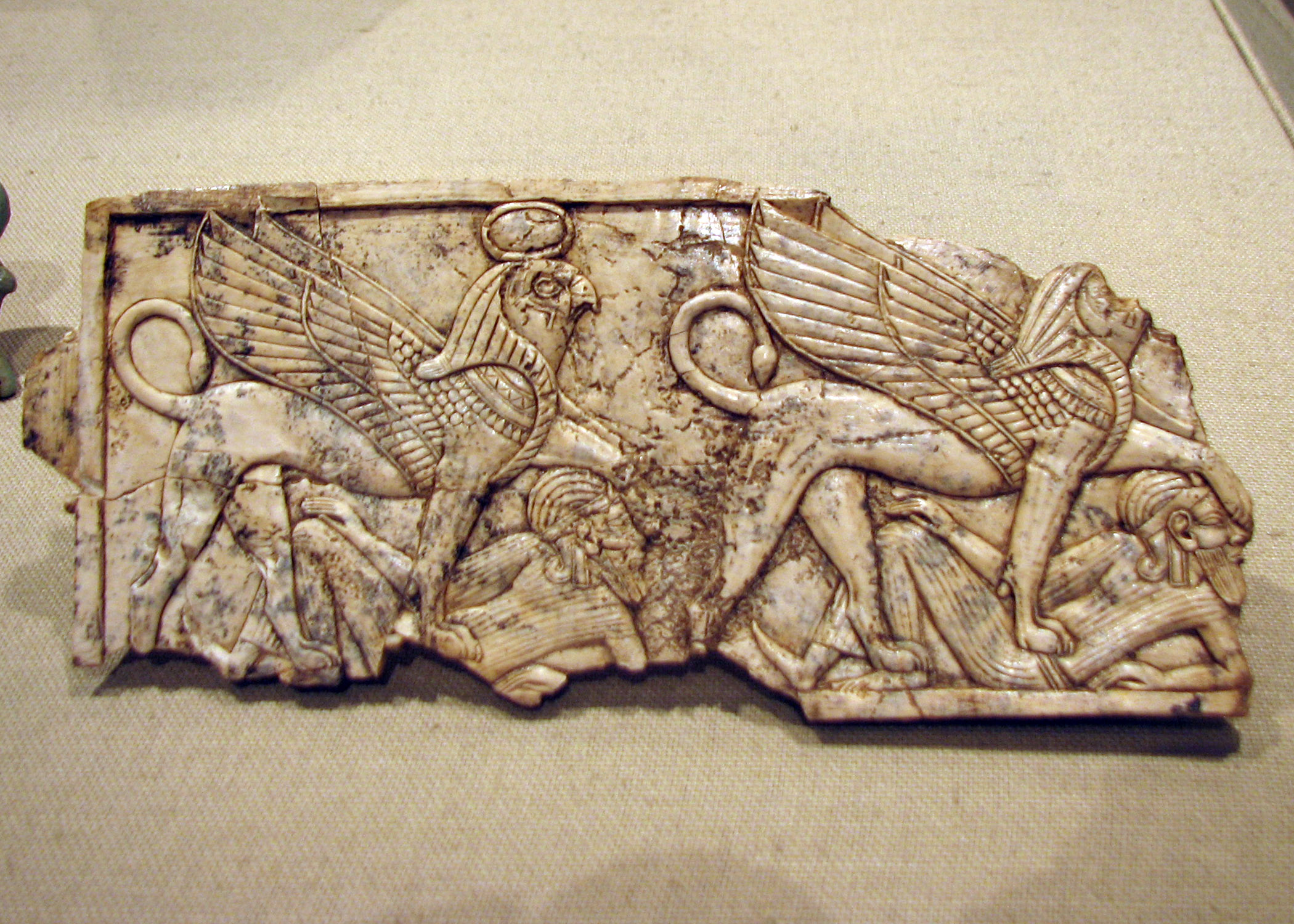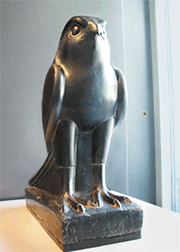
Neo-Assyrian, ca. 9th–7th century B.C.E.
Northern Mesopotamia, excavated at Nimrud (ancient Kalhu), Fort Shalmaneser, Room SW 35
Ivory, 3 1/4 x 7 3/4 in. (8.4 x 19.7 cm)
Rogers Fund, 1961, MMA 61.197.8
Photo © Joan Ann Lansberry
 Horus as a Falcon @ ARTIC
That would ironically include Northern Mesopotamia. So what was going on with this plaque? Had it been created in Egypt and brought back to Nimrud, as an example of what the Egyptians thought of them? (Notice the fallen people have the head bands and long beards of the Assyrians, see first prince at left in this relief.) Or were the Assryrians affirming that THEY weren't the dreaded foe? |


